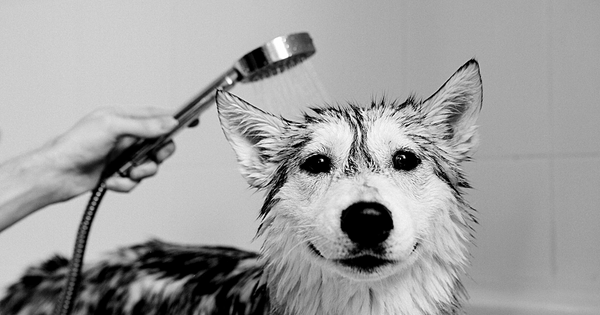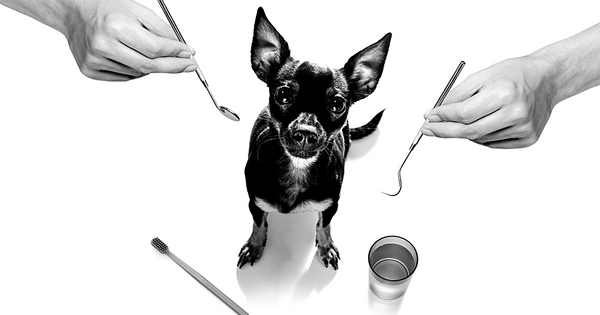
(By: Esther Kamau)
Can dogs get gingivitis? Yes, just like humans, dogs can get gingivitis.
It starts silently, without any identifiable signs, but as it progresses, some symptoms may appear as:
- Bleeding and puffy gums, especially during brushing or eating
- Bad breath
- Tartar buildup

Luckily, you can save your fur baby from all the agony by implementing some basic precautionary measures - like preventing plaque from building up in the first place.
Preventing plaque build-up is truly the best - and simplest - way to avoid gingivitis. (When plaque collects along the gums, it hardens to tartar, which is what causes the gingivitis.)
But… We Brushed!
Gingivitis happens. If all preventative measures have failed (or were simply unknown to you before), here are some of the usual steps to treating gingivitis in your pet.

Dr. Jeff Werber, prolific and practicing veterinarian, says, “If your dog has tartar, there is no way to get rid of it [yourself]. The only option is to get a professional dental cleaning.”
As usual, consult your friendly (and trusted!) local veterinarian for case-sensitive advice.
Professional Dental Cleaning
The first practical step to treating gingivitis is a professional teeth cleaning to remove the tartar deposits and polish the teeth. Getting your dog’s teeth polished helps to reduce new plaque and bacteria growth.

The full scope of a professional veterinarian dental cleaning for your pet usually involves:
- Full mouth x-ray
- Checking for abnormal pocketing
- Tooth scaling to remove tartar and plaque
- Dental polishing
In most cases (especially with cats), your veterinarian will put your dog under anesthesia, for the duration of the cleaning. Dental cleaning without anesthesia does not allow for cleaning below the gums. It is also more challenging to assess your dog’s oral health accurately.
Through proper cleaning gingivitis is reversible, as it does not destroy the tooth’s support structure. However, it may progress to more serious periodontal diseases, which can become fatal. International studies show a dismaying number of pet parents don’t even think to check on their pets’ dental health.

Preventative care (famously worth 90% of the cure) is as simple as daily teeth brushing at home, and periodic checkups at the veterinarian.
Brushing Your Dog’s Teeth at Home
Consistently brushing your pet’s teeth will assist in the prevention of plaque build-up, and aid in keeping new bacteria at bay. Here are some essential tips that will help you and your pet get into the sometimes life-saving habit of regular teeth brushing.
How To Start
Dr. Jeff says, “It's better to start early, at the puppy stage when it's easier to form new habits.’’

There’s no need to worry if your dog is older, though. It's a learning process, and patience is key.
Brushing Toolkit
It might seem like an unnecessary mention, but preparation, like prevention, can make all the difference; make sure you have the right tools before you start! For one, make sure you are using a dog’s toothbrush and toothpaste. You could start with a finger brush and move to a brush with a longer handle. The type of brush you need will be largely dependent on your dog’s size.

Dog’s toothpaste comes in flavors like peanut butter, beef, vanilla-mint, etc. Dog toothpaste is safer for dogs to swallow than the toothpaste we use.
Laying out your “tools” in the space you’ll be using before bringing your pet into the room can be the difference between a successful DIY dental experience and a not-so-pleasant one.
Get Into The Zone
You are more likely to succeed if your pet is relaxed and calm. Choose a time and place, like the twilight hour before bed, to take advantage of their relaxed state to introduce the new routine. When the time comes, avoid taking an intimidating physical position, standing over them, or forcefully holding them down.

Instead, pet them, kneel or sit beside them, as you gauge their discomfort through their body language, just as they’re gauging yours.
Brushing Technique
When you’re both comfortable, introduce the bright side of tooth brushing - the sweet, sweet taste (read: dash) of sugar. Let your dog taste the toothpaste by licking it off your fingers to ease them into the process.
In no hurry at all, begin making slow, circular motions with the brush over your dog’s teeth and gums gently, to get them familiar with the sensation. Don’t be alarmed if some light bleeding occurs, especially if this is a new practice for you, but consult your vet if it persists. Don’t shy away from voicing any pet related dental questions or concerns that may emerge, they may save your pet’s life.

Brushing Frequency
Dr. Jeff is supportive of daily brushing “just like us!”, but, if you can only do it 2-3 times a week, that is also okay. Aim for the areas where plaque collects, like the outsides of the canines and the back teeth. The goal is to stop the plaque from turning into tartar.
Extra Teeth Brushing Tips To Try with Your Dog
Associating brushing with a fun activity or treat will help your dog develop a positive attitude towards brushing. When you follow brushing with an activity or toy they enjoy, maybe even a dental treat, your dog will start looking forward to the ordeal. There’s a whole world of treats and chews that fight plaque as a “dental cleaner”, for the in-between-brushing-time.

Ultimately, consistency in brushing your dog's teeth is key to preventing gingivitis.
After only a few days of implementing nightly brushing, it’ll feel natural for everyone involved - and you may notice a measurable difference, too.
Visit Dr. Jeff Werber’s Instagram account (@werbs_dvm) to view and submit questions and answers on weekly AMAs – or call and leave a voicemail at 424-835-0576. Your call will be returned posthaste.
For emergencies, download Dr. Jeff Werber’s app Airvet, a video-chat option for veterinary needs at any time of day or night!
